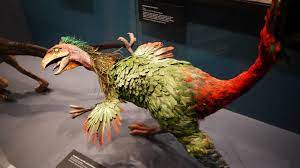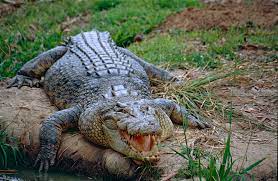The recovery of dinosaur DNA from fossils by scientists seemed absurd. But this concept became a reality due to the remarkable work of a team of paleontologists in China. These scientists discovered very well-preserved cartilage specimens from the fossilized leg bone of a small, peacock-like dinosaur that lived on the earth around 125 million years ago.
Some of the cells had retained their nuclei, and one also contained attached samples of organic molecules, including chromatin, which is a substance found in cells that are made entirely of close-knit dinosaur DNA particles. But it still remains a mystery as to whether there could be actual dinosaur DNA inside the cell nuclei and chromatin and whether it could be sequenced to produce accurate dinosaur DNA. Though scientists are still a long way from doing so at present, this discovery raised new and highly exciting possibilities.
Fossilized dinosaur DNA could be recovered and sequenced
The researchers who were involved in this research project were affiliated to the Chinese Academy of Science’s Institute of Vertebrate Paleontology and Paleoanthropology (IVPP) and with the Shandong Tianyu Museum of Nature. According to an article in the journal Communications Biology, the scientists were able to detect and isolate the cartilage cells while examining the fossils of a small dinosaur called Caudipteryx.

The Caudipteryx lived near the shores of the shallow lakes that were located once upon a time in the Jehol Biota in the modern-day Liaoning province of northeastern China. Past studies revealed that this creature which resembled a peacock possessed long tail feathers and other avian characteristics. It lived during the Early Cretaceous period, probably exclusively in China.
The region of Jehol Biota is known for having produced remarkably intact dinosaur remains which are in very good condition. One of the co-authors of the study who is an Associate Professor at the IVPP said in a press release that geological data had accumulated over the years and had shown that fossil preservation in the Jehol Biota was exceptional due to the fine volcanic ashes that had entombed the carcasses and preserved them to the cellular level.
The discovery of Cell Nuclei
Still, the discovery of cell nuclei in a fossil obtained from the area is surprising. The preservation of the cell nuclei in long-extinct organisms is considered to be rare and exceptional according to the article by the scientists. The nuclei are thought to degrade very rapidly after death due to the
fragility of nucleic acids. It sometimes takes place within hours of the death of the organism, and thus leaves no chance for these structures to enter the records of the fossils.
But still, the preservation which is a miraculous process does take place on occasion according to the scientists. The records of paleontology literature are filled with histological reports of fossil tissues with well-preserved nuclei, nucleoli, or chromosomes in various stages of division. These examples are many and include nuclei from Cenozoic mammals conserved in permafrost, Mesozoic dinosaurs, various Cenozoic, Mesozoic, and Paleozoic plants, and even fossil cell collections like embryos that are more than 600 million years old.
This was the second time in the last two years that nuclei and associated chromatin threads were found inside the fossilized remains of dinosaur cartilage cells. According to National Geographic, a study in 2020 had found these cells inside the fossilized skeleton of a duck-billed dinosaur, known as Hypacrosaurus Stebingeri, which existed approximately 75 million years ago.
Evidence of dinosaur DNA inside cell nuclei
This discovery would give rise to the idea that cartilage cells possess unique characteristics which would make them more likely to retain their nuclei and some additional organic materials even after they start fossilizing. The scientists involved in the Chinese study found that the cells they had discovered had been protected by a phenomenon called silicification, where organic materials can be fossilized into silicate minerals.
The team believed that this silicification was what had kept the cell nuclei in such a well-preserved state, allowing them to retain and show some of their living features after their decalcification and being examined.
In the study, the scientists isolated groups of cells and stained them with a purple chemical known as hematoxylin, which binds with the nucleus of a cell if the nucleus exists. During the activity, many nuclei were found in cartilage cells, and in one, a purple-stained nucleus was observed that had some darker purple threads connected to it. The scientists realized with delight that in this particular cell, a range of genomic material had been conserved including various biomolecules and chromatin threads.
Chromatin contains DNA-like cell nuclei. It was hoped that if the dinosaur DNA still exists inside these cellular remnants, it could eventually be extracted and decoded. A lot of research and development work needed to be completed before the scientists can accomplish this goal.
But they were very interested in the fossilized cell nuclei because it was where most of the DNA would be if it would have been preserved, according to a co-author and another Associate Professor from the IVPP. Though they had exciting preliminary data, they had just started studying cellular biochemistry in very old fossils. So, they needed to do more.
Revealing the hidden secrets of dinosaur DNA
While the cell nuclei and other materials had been detected in ancient fossils of the remains of animals on many occasions, no one had sequenced DNA successfully from a sample that was more than a million years old. In actuality, no one had really expected to be able to sequence dinosaur DNA, as it had always been assumed that their DNA would not have survived the process of fossilization.
But this new study from China suggested that this may not have been the case. If techniques develop allowing the scientists to sequence dinosaur DNA, from the Caudipteryx sample or from other fossils which might contain it, the science of paleontology would undergo a drastic change.
Dinosaurs were physically reconstructed using fossilized bones. The sequencing of dinosaur DNA could bring them back to life in a much-expanded manner and allow the scientists to learn more about the existence of dinosaurs than ever imagined by anyone previously.











